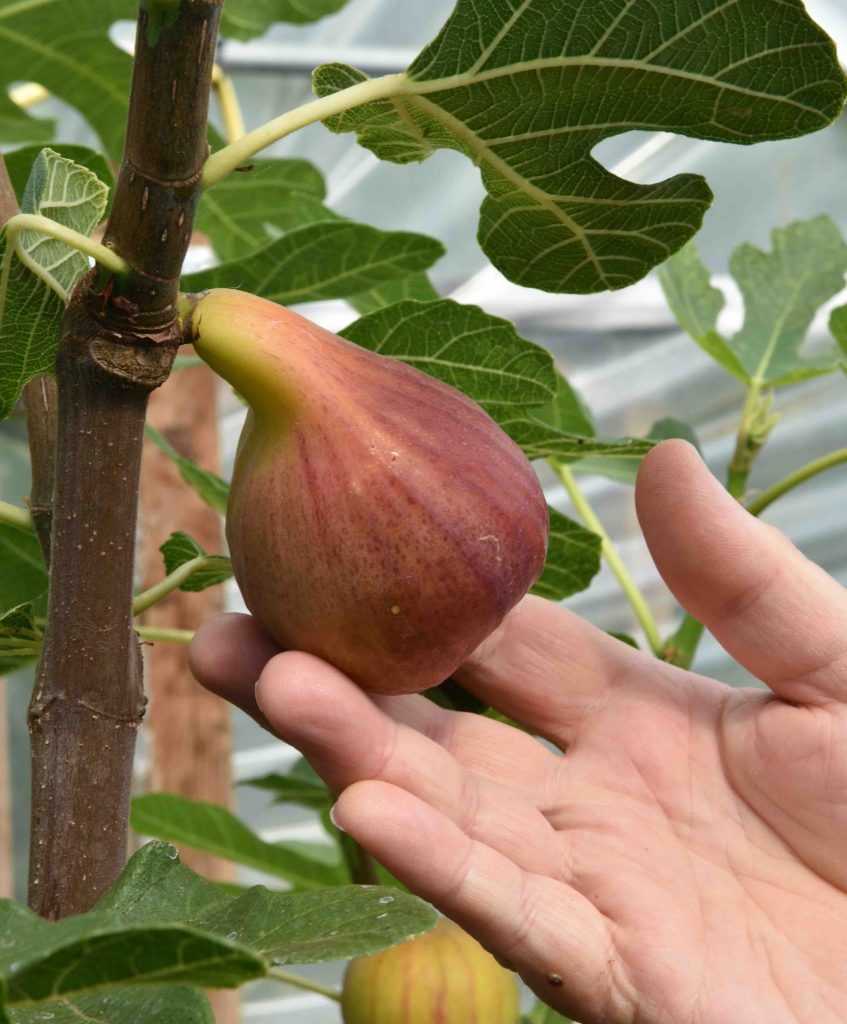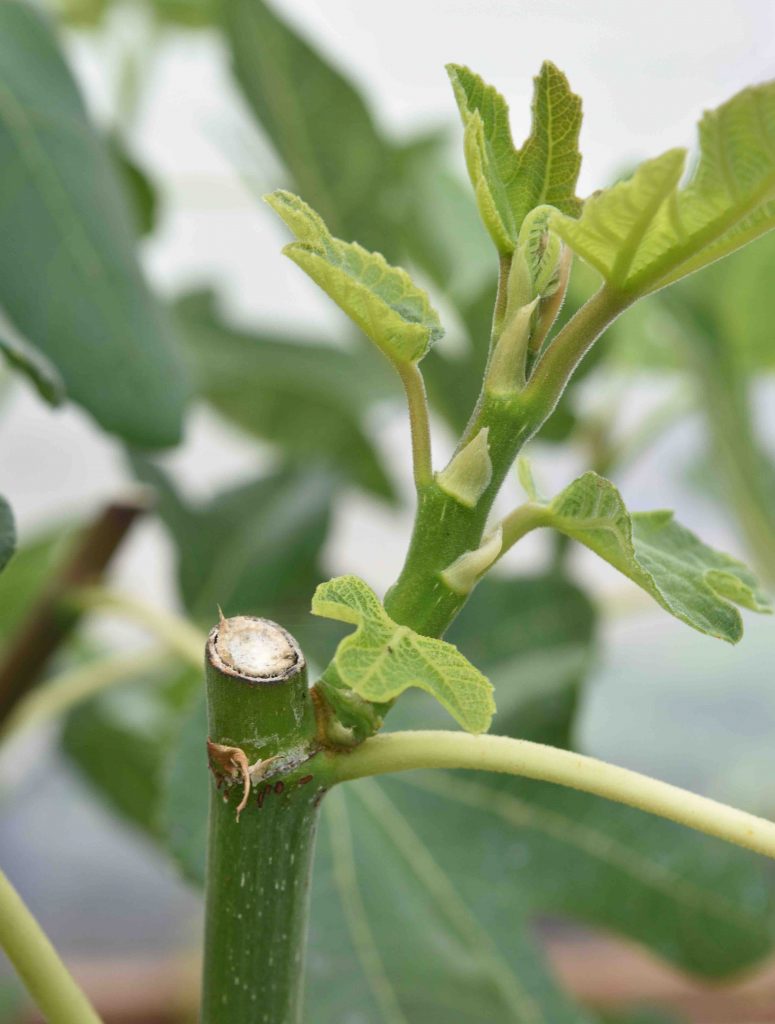
Figs are not the most obvious garden crop but they are a viable option and the plants are attractive as ornamentals too.
Figs are hardy, deciduous shrubs or small trees. They have rather thick branches, large, hand-shaped leaves and prefer a well-drained soil in sun. They can be grown in most soils including chalky soils but wet, heavy clay soils are not suitable. Although the plants are hardy and will not be damaged in most winters in this part of the world, they do need as much sun and heat as you can provide to ripen the fruits.
Figs are strange plants in many ways and the fruits have an odd structure with a mass of tiny flowers actually inside the fig. As such we don’t see recognisable flowers like apples or raspberries. Tiny fruits are produced on the new growth and they tend to be produced in spring and again on the late summer flush of growth.
The figs take a long time to grow from a tiny ‘figlet’ to a ripe fruit. The figs that start to grow in spring are unlikely to reach maturity by the end of summer. But the figs that start to grow in autumn, on the new growth, will survive the cold of winter, and they will restart into growth in spring and ripen in summer.
Figs are self-fertile and you only need one plant to get a crop. They crop on new shoots so pruning can be sporadic. You can cut them back a bit in spring but it is more important to prune them in summer to encourage new shoots to grow in autumn that will produce those important small fruits to overwinter.

Regular, light pruning will encourage a bushy habit and plenty of fruit. Avoid allowing the plant to get too big and then pruning hard – the plant will respond with strong, upright shoots but these are unlikely to produce fruits – cut these back lightly and the side shoots will crop.
You can grow a fig against a sunny wall or in a pot. They make good pot plants but need a large pot and must be planted in a loam-based compost such as John Innes No 3. Figs will tolerate drought but they will crop better if they are well watered and fed, especially in a pot.
To protect the young fruits from winter cold I grow mine in a polytunnel, planted in the ground, which makes it easier to look after and it has produced a good crop this year, the third year after planting.
The most common fig is ‘Brown Turkey’ although ‘Crystal Ice’ is a good option if you want ornamental foliage. The leaves are very narrowly divided, rather like snow crystals. My plant is ‘Rouge de Bordeaux’ which is supposed to have fruits with good flavour.
I must admit that, although I have grown figs before, the blackbirds have always devoured the fruits before I have picked them so I was careful to watch the crop this year. Figs are ripe when they change colour, start to sag on the branch, start to split and to ‘weep’ syrup. Unripe figs are not really edible. My verdict on my first, home-grown figs? Well they were sweet, soft and melted in the mouth. Would I give up strawberries for figs? No way! But the figs were good to eat with Greek yogurt and made a pleasant change and there are more to come. For little effort the tree has produced a tasty crop and should continue for many years to come.
Figs are pleasantly unaffected by most pests and diseases. The only likely problem on a fig tree under glass is scale insect or possibly mealy bug. Outside there should not be any pest or disease problems.
Weekly reminders
Sow biennials and perennials for colour next summer. Sow lupins, delphiniums, forget-me-nots and sweet Williams.
Cut lavender flowers for drying and lightly prune old plants to keep them compact.
Sow dwarf French beans and a last sowing of peas for a late crop
Pick courgettes regularly when they are small. This will prevent the getting too large and less tasty and will keep the plants cropping for longer